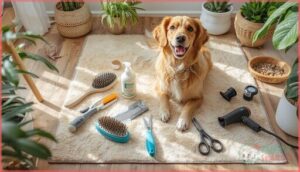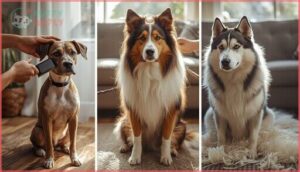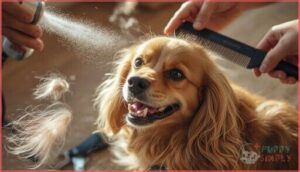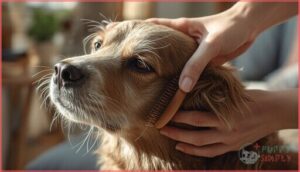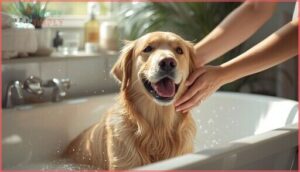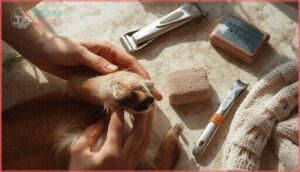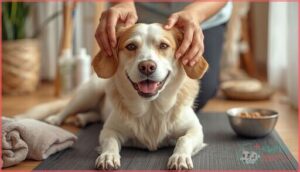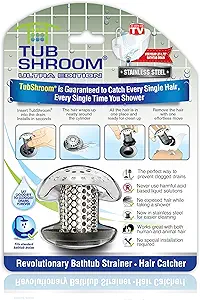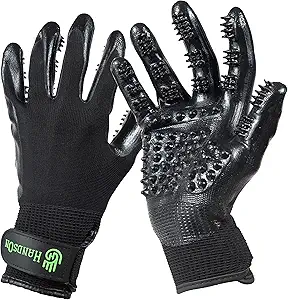This site is supported by our readers. We may earn a commission, at no cost to you, if you purchase through links.
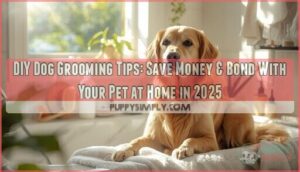
Your dog’s coat holds more secrets than you might think. That glossy shine, smooth texture, and fresh smell don’t just happen—they’re direct reflections of regular care, proper nutrition, and your willingness to get hands-on with grooming.
Professional groomers charge anywhere from $50 to $150 per session, which adds up fast when you’re booking appointments every six to eight weeks. Learning DIY dog grooming tips transforms routine maintenance into quality bonding time while keeping more money in your pocket.
Beyond the financial perks, grooming your dog at home lets you spot potential health problems early—lumps, skin irritations, ear infections, or dental issues that might otherwise go unnoticed. The techniques aren’t complicated once you understand your dog’s specific coat type and temperament, and the confidence you’ll both gain makes every brushing session smoother than the last.
Table Of Contents
- Key Takeaways
- Benefits of DIY Dog Grooming
- Essential Tools for Dog Grooming
- Brushing and Coat Care Techniques
- Bathing Your Dog at Home
- Nail Trimming and Paw Care
- Cleaning Ears, Eyes, and Teeth
- Top 3 DIY Dog Grooming Essentials
- Frequently Asked Questions (FAQs)
- How to groom a dog properly?
- Is DIY dog grooming at home a good idea?
- Do you need a groomer to groom a dog?
- Can a dog be groomed at home?
- How do you groom a dog for a haircut?
- What are the benefits of DIY dog grooming?
- How do you teach a dog to groom?
- How to groom a dog?
- How do I start dog grooming at home?
- Is DIY dog grooming a good idea?
- Conclusion
Key Takeaways
- Grooming your dog at home saves hundreds of dollars each year and builds a stronger bond between you and your pet.
- Regular DIY grooming lets you spot health issues early, like lumps, ear infections, or dental problems, before they become serious.
- The right tools—brushes, dog-safe shampoos, nail clippers, ear cleansers, and grooming gloves—make home care safer and more effective.
- Brushing, bathing, nail trimming, and ear cleaning routines should match your dog’s coat type and temperament to keep them healthy and comfortable.
Benefits of DIY Dog Grooming
Grooming your dog at home comes with more perks than you might expect. It’s not just about keeping fur tidy—it’s about supporting your dog’s health, happiness, and your wallet.
Here’s what you’ll gain when you take grooming into your own hands.
Health Advantages of At-Home Grooming
Vigilance pays off in dog health. When you groom at home, you spot changes early—think lumps, redness, or sore paws. Brushing boosts skin health, while regular nail trims protect mobility and joints. Bathing and coat care help with parasite detection and dog hygiene. Oral hygiene routines keep teeth strong and breath fresh. Regular grooming also helps with flea and tick detection.
- Improved mobility benefits
- Healthier skin and coat
- Early detection of issues
- Better parasite control
- Enhanced oral hygiene
Emotional and Behavioral Benefits
Spotting health issues is just the start—grooming at home weaves in powerful bonding benefits. Your dog learns to trust your hands, easing anxiety and stress. Gentle, predictable routines build security and boost cooperation, especially for nervous dogs.
Positive reinforcement makes every session a positive grooming experience, turning DIY grooming into a foundation for better behavior and a calmer, happier pet. Some dogs may experience grooming related anxiety, so it’s important to watch for signs of stress.
Financial Savings on Grooming
Beyond the emotional rewards, your grooming routine delivers serious financial savings. Professional visits for small breeds run $75–$125 each, while medium dogs hit $125–$175—meaning monthly grooming costs can top $1,500 yearly.
Home grooming can save you over a thousand dollars a year compared to professional visits
By grooming at home, you’ll slash that to around $60 in supplies. Your DIY payback period? Often just two sessions, with long-term savings reaching thousands over five years.
Essential Tools for Dog Grooming
Having the right grooming tools makes the whole process easier for you and your dog. Each piece plays a part in keeping your pet healthy and comfortable at home.
Here’s what you’ll want to have on hand for your grooming routine.
Brushes, Combs, and Deshedding Tools
Ever wondered why some dogs look like they just stepped out of a magazine? The secret’s in choosing the right dog grooming tools. Here’s what you need:
- Slicker brush for tangles and mats.
- Pin brush to gently fluff long coats.
- Deshedding tool for heavy shedders.
- Wide-tooth comb for detangling after baths.
Brushing boosts coat health—tool safety matters!
Dog Shampoos, Conditioners, and Wipes
A clean coat starts with mindful choices. Dog shampoo with balanced pH levels (below 4.5) protects sensitive skin, while natural formulations like oatmeal and aloe soothe irritation. Conditioner effectiveness shows in shine and easy detangling. Pet wipes, loaded with gentle wipe ingredients, tackle stains and messes—especially for allergy-prone pups seeking hypoallergenic ingredients.
| Product | Key Feature | Best For |
|---|---|---|
| Dog shampoo | Sensitive pH levels | Petfriendly hygiene |
| Dog conditioner | Coat shine, detangle | Conditioner Effectiveness |
| Pet Wipes | Hypoallergenic, gentle | Sensitive Skin |
| Oatmeal shampoo | Natural Formulations | Allergy-prone dogs |
| Chamomile wipes | Mild Wipe Ingredients | Daily cleanups |
Nail Clippers and Grinders
A steady hand and the right tool make dog nails trimming safe and stress-free. Clipper vs. Grinder comes down to noise, speed, and Quick Cutting Risks—clippers are quiet and fast, grinders smooth edges and reduce splintering.
Follow the Trimming Frequency Guide to avoid Overgrown Nail Dangers. Nail Grinding Benefits shine for thick nails, making DIY dog grooming easier and safer.
Ear and Dental Care Supplies
A well-stocked grooming kit isn’t complete without ear cleanser types and dog-safe toothpaste ingredients.
For dog ear cleaning, use liquid cleansers and cotton balls—never cotton swabs, which raise contamination risks.
For dog teeth cleaning, daily brushing beats dental chews for safety and results. Master gentle application techniques, and you’ll keep dental care and ear cleaning stress-free.
Brushing and Coat Care Techniques
Brushing your dog’s coat is more than just keeping them looking neat—it’s a key part of their health. The right routine makes a big difference, no matter your dog’s breed or coat type.
Here’s what you need to know to keep their fur in top shape.
How Often to Brush Different Coat Types
Did you know your dog’s brushing schedule hinges on coat texture, shedding frequency, and breed specifics? Short coats like Boxers need weekly brushing, while long-haired breeds demand daily attention to prevent mats. Double-coated dogs, such as Huskies, require extra brushing during seasonal changes.
Your grooming routine should flex with lifestyle factors—active dogs often need more frequent coat care.
Removing Tangles, Mats, and Loose Fur
Ever tried brushing out a stubborn mat and felt like you were unraveling a tiny puzzle? Mats trap moisture, risking infection, so prevention is key. Use these steps for smooth dog fur:
- Start with Detangling Sprays for loose tangles.
- Work wide-tooth combs from ends inward.
- Rely on Safe Clippers—never scissors.
- Finish with Deshedding Tools for Breed Specifics.
Distributing Natural Oils for Skin Health
Your dog’s coat functions like a self-oiling system, where brushing spreads sebum from the skin to the hair tips, enhancing skin hydration and coat texture. Brushing 1–2 times weekly helps prevent dry patches and improves shine. Regular sessions also boost circulation, supporting healthier oil production while reducing the risk of irritation from harsh shampoos.
| Coat Type | Brushing Frequency |
|---|---|
| Short-coated | Weekly |
| Long/double-coated | Several times per week |
| Hairless breeds | Occasional soft-bristle sessions |
Consistent deshedding and oil supplementation, such as fish oil, further protect skin and coat health.
Bathing Your Dog at Home
Bathing your dog at home isn’t just about keeping them clean—it’s also a chance to support their skin and coat health. Knowing how and when to bathe makes a big difference for your dog’s comfort.
Here’s what you should consider before you get started.
How Often to Bathe Based on Coat Type
Bathing frequency hinges on coat texture, breed standards, and skin sensitivity. For instance, smooth coats need bathing every few months, while long-haired breeds require washes every 2–3 weeks to prevent matting. Wire and double coats benefit from less frequent baths, about every 6–8 weeks.
Always match your dog shampoo and bathing techniques to your dog’s specific coat type.
Safe Bathing Methods and Preparations
Once you’ve picked the right dog shampoo and conditioner for your pet’s coat type, focus on comfort and safety. Lukewarm water temperature keeps skin happy, and a rubber mat helps with slip prevention. Use cotton balls for ear protection, gentle bathing techniques, and always keep towels handy for drying techniques. These simple steps make bathing your dog stress-free.
- Check water temperature on your wrist
- Place a non-slip mat in the tub
- Use pet-friendly shampoo and conditioner
- Protect ears with cotton balls
- Dry with soft towels
Preventing Skin Irritation and Overbathing
Once your dog’s bath wraps up, preventing skin irritation means thinking about more than just clean fur. Stick with dog shampoo and conditioner that match canine pH, and rinse until water runs clear. Good water quality helps, and lipid replenishment products support barrier health.
Overbathing disrupts microbiome balance, so keep baths spaced out, and consult your veterinarian if irritation appears.
Nail Trimming and Paw Care
Keeping your dog’s paws healthy starts with regular nail care and a little know-how. It’s easier than you might think, especially when you’ve got the right tools and approach. Here’s what you need to know before you get started.
How to Trim Nails Safely
Did you know that trimming a dog’s nails at a 45-degree angle, clipping just 1–2 mm at a time, is the safest way to avoid the quick and control bleeding? Paw handling matters—hold the pad gently, extend the nail, and watch for a chalky ring in dark nails.
For DIY dog nail trimming, keep styptic powder handy for quick bleeding control.
Choosing Clippers Vs. Grinders
Which tool works best for your dog’s nails? Clippers deliver quick, single-cut trimming for thin nails but risk splintering if dull—clipper safety depends on sharp blades.
A nail grinder offers gradual control for thick or black nails, creating smoother edges with less quick risk, though noise levels and cost analysis matter. Grinder benefits shine for large breeds; nail clippers suit small dogs perfectly.
Identifying When Nails Need Trimming
How often should you trim? Watch for these telltale signs your dog’s nails need attention:
- Audible Clicking – If you hear tapping on hardwood or tile, nail curvature has progressed beyond ideal length, signaling immediate trimming.
- Ground Contact – Nails touching the floor indicate overgrowth, altering paw posture and gait changes that strain joints.
- Visual Curve – When nails bend past the pad, DIY dog nail trimming becomes urgent for proper nail care.
Tips to Reduce Stress During Nail Care
Because nail trimming ranks among the most stressful DIY dog grooming tasks, desensitization training transforms anxiety into acceptance. Pair positive reinforcement—high-value treats after each paw touch—with distraction techniques like puzzle toys during clipping. Safe handling means short sessions; if your dog trembles or pants, pause immediately. When stress persists despite your best efforts, professional support, including behavioral coaching or mild anxiolytics, ensures grooming safety for fearful dogs.
| Strategy | What to Do | Why It Works |
|---|---|---|
| Desensitization Training | Handle paws daily without clipping; gradually introduce tools over four weeks | 86.7% of dogs showed reduced fear after structured exposure programs |
| Positive Reinforcement | Offer treats during each step; keep sessions under two minutes | Pairing rewards with handling prevents escalation of fear responses |
| Distraction Techniques | Use stuffed puzzle toys or favorite chews during trimming | Diverts focus from the procedure, reducing observable anxiety |
| Safe Handling | Monitor body language; stop if you notice panting, trembling, or escape attempts | Short, frequent sessions maintain stable stress levels without cortisol spikes |
| Professional Support | Consult your vet about coaching sessions or anti-anxiety medications | Reserved for highly stressed dogs when behavioral methods alone prove insufficient |
Cleaning Ears, Eyes, and Teeth
Keeping your dog’s ears, eyes, and teeth clean isn’t just about appearance—it’s about catching problems before they turn into expensive vet visits. Many owners skip these areas because they’re unsure what’s normal and what’s a red flag.
Let’s walk through how to spot trouble early and keep your dog’s mouth healthy with regular brushing.
Recognizing Signs of Infection
When you’re handling dog ears cleaning or checking your dog’s paws, watch for warning signs that signal trouble. Ear infection signs include head shaking, redness, unusual odor, or discharge, while skin infection signs show up as inflamed patches, excessive itching, or crusty lesions. Eye infection signs—like yellow discharge or squinting—and systemic red flags such as behavioral changes mean veterinary care is needed, since preventing infections beats treating them later.
- Check ears for dark discharge, swelling, or strong smells during each grooming session
- Look for red, thickened skin or pustules that indicate dog health issues requiring attention
- Monitor eyes for cloudiness, weeping, or persistent pawing at the face
- Notice changes in energy, balance, or mood that accompany visible dog eyes cleaning concerns
Brushing Your Dog’s Teeth for Oral Health
Brushing your dog’s teeth at home makes a real difference—daily brushing cuts plaque buildup by more than three times compared to chews or special diets alone. With dental disease affecting up to 80% of dogs over two, consistent teeth brushing is your best defense.
Use dog-safe toothpaste (never human brands with xylitol), aim for daily sessions, and remember that home dental care complements—but doesn’t replace—professional cleanings under anesthesia.
Top 3 DIY Dog Grooming Essentials
You’ve got the basics down, but a few well-chosen products can make your grooming routine smoother and less stressful for both of you.
These three tools aren’t fancy or expensive, yet they solve common problems that trip up most first-time home groomers.
Here’s what belongs in your starter kit.
1. TubShroom Ultra Drain Hair Catcher
If you’ve ever watched clumps of fur swirl toward your drain during a bath, you know the panic that follows. The TubShroom Ultra sits inside your drain and catches every hair while water flows freely—no tools needed for installation. Its stainless steel design withstands heavy shedding sessions, and cleaning takes seconds: just pull the collected fur off and rinse.
For DIY dog grooming at home, it prevents costly plumber visits and lets you bathe your pup worry-free, saving money with each shampoo session.
Best For: Dog owners who bathe their pets at home and want to avoid clogged drains without calling a plumber every few months.
- Catches all the fur during bath time and sits inside the drain so you don’t see hair piling up on top—just pull it out when you’re done and rinse.
- Stainless steel holds up to heavy shedding sessions and won’t rust or get gross like cheaper plastic versions.
- Installs in seconds without tools and fits most standard tub drains with the included adapters.
- You’ll need to clean it after every bath or two to keep water draining quickly, which adds a small step to your grooming routine.
- Won’t fit unusual or oversized drains even with the adapters, so measure your drain opening before buying.
- Can’t fix drains that are already clogged with old hair buildup—you’ll need to clear those out first before it works properly.
2. Epi Otic Ear Cleanser for Pets
Just as hair clogs drains, built-up ear wax can trigger infections in your dog’s ears. Epi-Otic Ear Cleanser cuts through that gunk with its alcohol-free formula, making ear cleaning safe for puppies and seniors alike.
You’ll pour it into the canal, massage gently, then wipe away debris—no vet visit needed. Use it two to three times weekly to prevent infections before they start.
At around $12 for a 4 oz bottle, it’s cheaper than treating otitis externa and keeps your dog comfortable between full grooming sessions.
Best For: Pet owners looking for a gentle, routine ear cleanser to prevent wax buildup and infections in dogs or cats of any age.
- Non-irritating, alcohol-free formula won’t sting sensitive ears and is safe for puppies, kittens, and senior pets
- Helps prevent infections by removing wax and debris that trap moisture and bacteria in the ear canal
- Affordable maintenance at around $12 for 4 oz, much cheaper than treating full-blown ear infections at the vet
- Won’t eliminate yeast infections on its own—you’ll need to pair it with antifungal medication if infection is present
- Can cause dryness or irritation if you overuse it, so stick to the recommended frequency
- Not safe for pets with ruptured eardrums, which means you should get a vet check before using it if infection is suspected
3. Pet Grooming Gloves Shedding Remover
When ear cleaning wraps up, tackle the loose fur covering your couch with grooming gloves that feel like petting to your dog. These silicone-tipped tools capture shed hair through hundreds of soft nodules, removing topcoat fur without the resistance that rigid brushes create.
You’ll see less hair on furniture within days when you stroke your dog two to three times weekly, and the glove’s breathable fabric keeps your hand comfortable during longer sessions. At $24.99, they work on short and medium coats best, letting you bond while you deshed.
Best For: Dog owners with short- or medium-haired pets who want a low-stress way to control shedding around the house without the hassle of traditional brushes.
- Feels like regular petting to your dog, reducing anxiety and resistance during grooming sessions compared to rigid brushes
- Noticeably cuts down on loose fur around your home within a few days when used 2–3 times per week
- Works during both dry grooming and bath time, plus it’s easy to clean by rinsing with soap and water
- Not as effective on thick double coats or during heavy seasonal shedding without adding a separate deshedding tool
- Collected fur can get messy as it peels off the glove, requiring frequent cleanup during sessions
- May not work well for dogs with very sensitive skin or severe matting that needs professional attention
Frequently Asked Questions (FAQs)
How to groom a dog properly?
To groom a dog properly, start with a coat assessment and tool selection suited to breed specifics.
Use gentle grooming techniques, follow safety precautions, and adapt Dog Grooming Techniques to your pet’s needs for stress-free AtHome Dog Grooming.
Is DIY dog grooming at home a good idea?
DIY dog grooming at home is a smart choice for many, especially if your dog’s breed and temperament suit gentle handling.
It saves money, strengthens bonds, and, with the right dog grooming tips, balances health with comfort—a true hybrid approach.
Do you need a groomer to groom a dog?
“Every dog has its day,” but not every dog needs a groomer. Breed specifics matter—some coats demand professional benefits, while others suit grooming at home.
DIY limitations exist, yet financial savings on grooming make DIY dog grooming appealing for many.
Can a dog be groomed at home?
You absolutely can handle home grooming, but your dog’s breed grooming needs, coat type, and your grooming skill level matter.
While grooming your dog at home saves money, some DIY grooming challenges may require a professional grooming alternative.
How do you groom a dog for a haircut?
Before cutting a dog’s hair at home, thoroughly brush out tangles and check the skin for irritation.
Use pet clippers with guard combs, work with the coat’s direction, and exercise extra caution around sensitive areas like ears.
What are the benefits of DIY dog grooming?
Grooming at home strengthens your bonding experience while cutting costs by over $600 yearly.
You’ll spot health issues early, enjoy convenience on your schedule, and reduce stress for anxious pets through familiar surroundings.
How do you teach a dog to groom?
Think of training like building trust one small step at a time. Use positive reinforcement and desensitization methods to teach consent behaviors, making each grooming routine a cooperative experience that strengthens your bond.
How to groom a dog?
Start with regular brushing to remove loose fur and prevent mats, then bathe using dog-safe shampoo.
Trim nails carefully, clean ears gently, and brush teeth to maintain your dog’s overall health and comfort.
How do I start dog grooming at home?
Did you know over 60% of dog grooming happens at home?
Begin with an Initial Assessment of your dog’s coat and nails, consider Breed Specifics, set up a Safe Space, use Training Cues, and focus on Gradual Introduction.
Is DIY dog grooming a good idea?
You’ll find DIY dog grooming offers real benefits: better pet hygiene, financial savings, and closer bonding.
With home equipment and owner responsibility, you can manage grooming safety, spot health issues early, and follow veterinary guidance confidently at home.
Conclusion
Investigate the truth of a theory to help the audience enjoy what’s written. Imagine your hands as both brush and shield—each stroke with your dog’s coat is a quiet conversation, a check-in, a moment of trust.
DIY dog grooming tips are more than shortcuts; they’re bridges to your pet’s well-being. With every session, you’re not just saving money—you’re building connection and confidence. The real reward isn’t just a clean coat, but a happier, healthier companion by your side.
- https://antonioandparis.com/wp-content/uploads/2025/01/PET-TREND-REPORT.pdf
- https://vanpaws.com/blogs/dog-blogs-3/how-much-does-dog-grooming-cost-professional-services-vs-home-grooming
- https://www.moneymanagement.org/blog/cost-comparison-professional-dog-grooming-vs-grooming-at-home
- https://www.petmd.com/dog/general-health/how-often-should-you-bathe-your-dog
- https://canineboardinglodge.com.au/dog-grooming-frequency/

